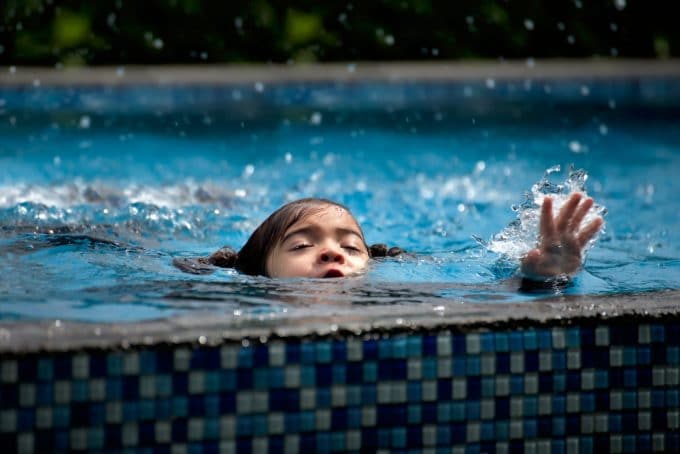Drowning doesn’t necessarily look like it does on TV and in the movies. This is how every parent can quickly spot a drowning child or adult this Summer.

Do you think you’d recognize someone who was drowning? I always thought it would be really easy. The flailing arms, gasping for air, yelling – it all seemed pretty straight forward if Heaven forbid I saw such a thing happen.
Thank goodness there was a viral post from some years ago (that’s now been updated) that explains exactly what to look for. Much gratitude goes to Mario Vittone who first wrote and shared this information. I’m sure your article has saved countless lives, Mario.
(There is a video at the bottom of this post to show you exactly what drowning looks like.)
The Signs of Drowning
On average, more than 10 people drown each day. The majority of those drownings are children. That’s why we’re writing about this and our hope is that blogs across the internet will as well. Let’s share this information far and wide to as many people as possible.
Here’s what Mario has to say.
“Drowning is almost always a deceptively quiet event,” he writes. “The waving, splashing and yelling that dramatic conditioning (television) prepares us to look for is rarely seen in real life.”
That’s because of something called The Instinctive Drowning Response.
Lifeguard and water rescue expert Francesco Pia, Ph.D. says the drowning event is silent, and in fact, the drowning person may appear to be almost calm.
To paraphrase, the victim is doing whatever they can to keep their nose and mouth above water. Their arms are outstretched. They can’t risk screaming and thrashing about for fear of going under.
So what exactly does a drowning person look like?
Pia says these are the specific things to look for. The drowning person will be…
Silent: There’s no spare breath to call for help.
Bobbing up and down: His mouth sinks below the water’s surface, pops up just enough to breathe and sinks back down.
Stiff-armed: Instead of waving for help, his arms are out to the side, hands pressed down on the water to keep him afloat. He can’t even reach out to grab a life preserver.
Still: He won’t be kicking. His body will be straight up and down, almost like he’s standing in the water.
The person can only stay like this for 20-60 seconds.
More information you need to know.
Gerry Dworkin, a professional aquatics safety and water rescue consultant for Lifesaving Resources LLC told WebMD that your child may look like they’re simply playing in the water.
“That’s one of the problems for moms, dads, and even lifeguards,” he says. “They see somebody floating on the surface, but because of the movement of waves, they appear to be moving or playing even though they may be unconscious.”
That’s terrifying. I’m not ashamed to say it scares me to bits, but I’m okay with that fear. It’ll keep me on my toes any time kids are in or near water.
In closing, I suggest a couple of YouTube videos so that you will have a very clear mental picture of what you’ve just read.
More child safety information posts:
Sleeping baby safety warning for all parents and caregivers.





Leave a Review!
We LOVE hearing from you! Submit your question or comment here.
Your email address will not be published.